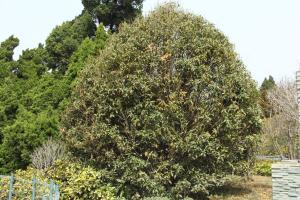How to Save a Browning Potted Ice Plant
Ice plants make great succulent additions to any garden or indoor space, but when something goes wrong and they start to brown, it can be concerning. Browning of the leaves or stems can be due to a few things, such as too much or too little water, direct sunlight, or pests. Here are some tips on how to save your browning potted ice plant:
Assess Watering Schedule
One of the main reasons why ice plants turn brown is due to improper watering. While they do well in areas with low rainfall, they still require regular watering to thrive. The frequency of watering should be determined by the environment they are in, the pot size, and the type of soil. Overwatering can lead to root rot and browning, whereas underwatering can cause the leaves to dry up and turn brown. It's best to check the soil's moisture level every few days and water according to the plant's needs.
Consider Exposure to the Sun
Ice plants are sun-loving succulents that thrive in hot, dry environments. However, exposure to direct sunlight for extended periods can lead to leaf scorching and browning. If your potted ice plant is browning, consider moving it to a shady spot or providing some shade during the hottest part of the day. A gradual acclimation to sunlight can also help the plant adjust to a brighter environment without getting burned.
Inspect for Pests
Another common reason why ice plants turn brown is due to pests. Mites and mealybugs are common pests that affect succulents, and they can cause the leaves to turn brown and fall off. If you notice a powdery white substance on your ice plant's leaves or stems, it's likely to be mealybugs. Spider mites, on the other hand, cause webbing around the leaves and stems, and tiny red or yellow specks can be seen moving around. Treat any pests you find promptly to prevent further damage and browning.
Adjust Soil pH and Nutrients
Ice plants grow best in well-draining soil with a pH between 6.0 to 7.5. If the soil pH is too high or too low, it can cause nutrient deficiencies, which can lead to browning or discoloration of the leaves. A soil test kit can help determine the soil's pH and nutrient levels, and appropriate amendments can be made to correct any imbalances.
Conclusion
By following the tips above, you should be able to save your browning potted ice plant and restore it to its former glory. Whether it's adjusting the watering schedule, providing shade, treating pests, or testing soil pH, always remember to be patient and observant of your plant's needs. With proper care and attention, your ice plant will thrive and bring beauty to your space for years to come.

 how many times do yo...
how many times do yo... how many planted tre...
how many planted tre... how many pine trees ...
how many pine trees ... how many pecan trees...
how many pecan trees... how many plants comp...
how many plants comp... how many plants can ...
how many plants can ... how many plants and ...
how many plants and ... how many pepper plan...
how many pepper plan...





























